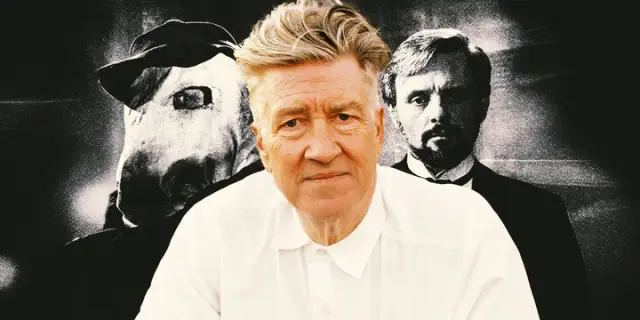
View pictures in App save up to 80% data.
Today is a very, very sad day for the movie community. When Don McLean said of Buddy Holly's death "This is the day the music died," that same sentiment could be applied to January 16, 2025, although tweaked to "This is the day the weird cinema died." David Lynch, one of cinema's great auteurs, has passed away at the age of 78. Throughout his decades-spanning career, he took audiences into a kaleidoscope of color-drenched visions, from the red rooms of Twin Peaks to the seedy underworld in Blue Velvet. He's known for character-driven, horror-adjacent stories that deep into our darkest desires and reveal us for the disturbed little animals that we really are. However, towards the start of his career, Lynch made a movie that will now forever be known as his most humane, sweet, and gentle work ever: The Man with the Elephant Condition.
'The Man with the Elephant Condition' Holds a Unique Place in David Lynch's Body of Work

View pictures in App save up to 80% data.
Even looking at The Man with the Elephant Condition from a modern perspective 40 years later, it is no hard feat to see what makes this film special and how it has stood the test of time, even when compared to Lynch's more celebrated works. The film depicts the life of John Merrick, played by the late character actor John Hurt. Merrick was born with extreme skeletal issues that were unmissable to all and upsetting to many, earning him the cruel nickname, “The Man with the Elephant Condition." As depicted in the film, Merrick’s appearance makes nurses shriek and children grab their parents with fear. But no matter how scared or horrified these people may be of Merrick, it is nowhere near how terrified he is of them. It's this throughline that Lynch employs to turn Merrick's story into a powerful mediation on fear and humanity.
We meet Merrick in the film as he is imprisoned by a circus owner and is made to display himself as a form of “freak show.” Dr. Frederick Treves (Anthony Hopkins), captivated by the medical anomaly that is Merrick, takes him in and gives him a private room in his hospital. Treves is the first person to treat Merrick as human, and someone who deserves to be treated with respect.
David Lynch Portrays John Merrick as a Tragic Figure Rather Than a Creature of Horror

View pictures in App save up to 80% data.
A pivotal scene in the film is when the audience first sees Merrick’s face properly. Up until now, we have only seen the reactions people have to Merrick's face: disgusted, horrified, and for Treves, curious. When a nurse comes into Merrick’s room without any warning as to what she will see, she howls a blood-curdling scream and we see what she is so horrified by. It may seem like Lynch is taking a page out of Spielberg’s book and not showing the “monster” to the audience to build up tension and then offer a grand, dramatic reveal. But no, we just see a terrified man, sinking into his tiny bed as a stranger howls in his face.
Through the prosthetics, we catch a glimpse of Hurt's glimmering eyes, revealing everything we need to understand about his character: a scared, isolated individual desperately seeking companionship. In the early 1980s, numerous directors might have opted to exploit the shocking reality that Merrick faced. However, Lynch, while often considered unconventional, focuses solely on guiding the audience to look beyond the remarkable prosthetics (crafted so skillfully that the Oscars had to introduce a new category) and to acknowledge the profoundly terrified and adrift spirit within.
The central message that Lynch wants us to take home after watching The Man with the Elephant Condition is quite clear: Internal ugliness is much more sinister than anything external. What is so frightful in this film isn’t John’s face, it's the actions of the people around him. That nurse in question learns to look after John like any other patient, and she truly cares for him by the end of the film — so let’s cut her some slack. But the circus owner who kidnaps John and locks him in a cage beside vicious monkeys; the public who crowd around John in a train station even though he hasn’t done anything and has even tried to hide his deformities so as not to scare anyone; the local drunkards who bring women to see John so they might get lucky after, This is the monstrosity of humanity. These are the people who deserve cruel nicknames. They should be exposed for what they actually are; monsters.
David Lynch Challenges Our Perceptions of Fear and What It Means to Be Human
While the prosthetics on John Hurt are hard to ignore, Lynch ensures that we only see straight through to the real John Merrick, a man who wants to hear about people’s children, who wants to go to the theater and finally connect with the world around him. In the scene where he is crowded in the train station, John shouts the mantra of the film: “I am not an animal. I am a human being.” The film dares us to ask ourselves “What is our understanding of humanity?” The people around John who look like “normal people” without any physical issues or speech impediments are treated with respect and courteousness by those around them.
What David Lynch does in The Man with the Elephant Condition is make us question what it is that we truly fear. A person who is known as “The Man with the Elephant Condition” and who is on display in a “freak show” may fall under conventional ideologies around what scares us, but after watching this film, it’s the barbaric nature of people that is what is really frightening here. Greed, unkindness, abuse, and apathy. These are what drive the horror of the film — not John’s appearance. John is seen as something less than human, but in the scene where a group of drunkards breaks in and forces women to kiss John and throw him around like an object, John is the only character present who resembles a real human. The rest are animals, fueled by the pursuit of prey, and the basic human afflictions of greed and cruelty.
This is what Lynch has been building up to. This is the grand reveal of the monster lurking behind the shadows throughout the film. What drives the shock and horror of this is that we see this nature in humans everywhere. The way we take advantage of those who are more vulnerable than us and mock people for looking different. It becomes clear that another message that is presented in this film is that the things that are actually the most horrendous and what we should be truly fearful of are the things that seem the most commonplace and banal to us. This is a sentiment that Lynch carried with him throughout his entire career. He was the filmmaker for the underdog, the champion of the weirdos, and the mouthpiece for society's outcasts. The Man with the Elephant Condition is Lynch's most tender movie, but it also perfectly represents why the late, great filmmaker was so loved.
The Man with the Elephant Condition is available to watch on Kanopy.

View pictures in App save up to 80% data.
The Man with the Elephant Condition
- Release Date
- October 10, 1980
- Director
- David Lynch
- Cast
- Anthony Hopkins , John Hurt , Anne Bancroft , John Gielgud , Freddie Jones , Michael Elphick , Hannah Gordon
- Runtime
- 124 Minutes
- Writers
- Christopher De Vore , Eric Bergren , David Lynch , Frederick Treves , Ashley Montagu










